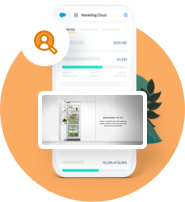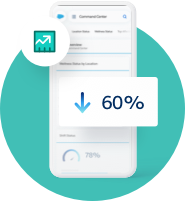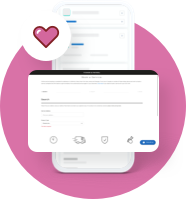Learn two paths to building your innovation roadmap.
Create a strategic technology plan that puts customers at the centre of everything you do.

Bring stakeholders together to build your innovation roadmap.
If you walk away with just one key piece of advice from this chapter, let it be this: developing an innovation roadmap is a shared effort that should be done collaboratively across departments at the leadership level. This is not an IT-only exercise.
Bring together a team with strategic oversight over enterprise technology, the entire customer journey or lifecycle, and business operations. Your business strategy, customer experience goals and challenges, and the employee experiences that enable them are all critical drivers and considerations for a technology plan, and require a diverse team from across the organisation to consolidate into a single, cohesive vision.
With the right team in place, a pivotal step in undertaking digital transformation is building a strategic innovation roadmap or technology plan that outlines the initiatives your teams will execute over a given timeline. This includes goals, milestones, and KPIs for all relevant stakeholders, from sales and marketing to customer service and IT.
Your innovation roadmap should include the following components, and will follow one of two approaches (which we’ll cover in detail in a few minutes):
- Initiatives set against a timeline.
- Short- and long-term goals.
- Resource plans.
- Key milestones like cutover and release dates.
- Release plans that can be communicated across the organisation.
- Change management, adoption, and training program timelines.
- Regular status updates for key stakeholders.
Start by prioritising the greatest customer and employee needs.
It's been shown that happy employees and customers can result in 1.8X faster revenue growth. As you start to design your innovation roadmap, prioritise initiatives around your organisation’s top customer and employee needs or pain points — particularly those that have the greatest impact to your business and KPIs. This ensures your efforts are grounded in the end customer experience and provide critical value.
To do so, we recommend creating journey maps for each key customer segment. To create your maps, review customer feedback and listening outputs and go on an internal listening and learning roadshow to collect the detail needed to document a typical journey for each segment. Each customer interaction with your company should be a milestone on the journey map.
But the customer experience is only half the story. You will also want to map the back-end process and employee experience enabling each milestone. It can be helpful to include the employee journey map right below the customer journey map to easily compare the front and back-end experience across every touchpoint. Quantify the output of these interactions where possible to understand business impact and circle the areas of greatest friction.
Building your technology roadmap — two paths to success.
As you start to lay out a plan around the initiatives you need to pursue, you will need to decide how to approach an innovation roadmap based on considerations like timeline, budget, team experience, and any internal or external forces impelling action. All of these inputs will inform the way you approach a strategic plan.
Two common approaches are explained below to help guide your efforts.

Key considerations for every technology plan.
Setting Expectations
Whichever approach you take, setting expectations is critical. It can take time to fully configure a new system or tool to meet the needs of the teams using it.
Along with clear goals and KPIs, make sure your plan outlines a timeline, including key milestones and cutover dates, that is communicated across the company to ensure alignment. Also ensure the plan accounts for regular check-ins with core stakeholders to review impact against your goals, and optimise efforts accordingly.
Resourcing
Planning for resource support during implementation is another important step that will impact your roadmap. Work with your cross-functional stakeholders to find the best answers to the following questions, and explore the implications of time, cost, and people to get the job done.
- Can your organisation handle the workload and change management needed to deliver your vision?
- Consider how your organisation funds and resources existing strategic programs. Do you have the right structure and expertise to build in-house?
- Should you collaborate with a consulting partner to implement change? A consulting partner can bring in-depth industry and technology expertise that may be invaluable to the success of a project, especially if you don't have the right resources or bandwidth to deliver in-house.
Optimisation and Ongoing Innovation
Remember, this is a journey that doesn’t end with a system cutover.

Discover Salesforce Customer 360
Learn how to unite your whole company around your customers.

Article
What exactly is Salesforce Customer 360?

Video
Creating a Connected Future Built by Trust
More Resources

Guide
The Transformation Playbook

Research and Reports
State of the Connected Customer Report

Article
What is Digital Transformation?















